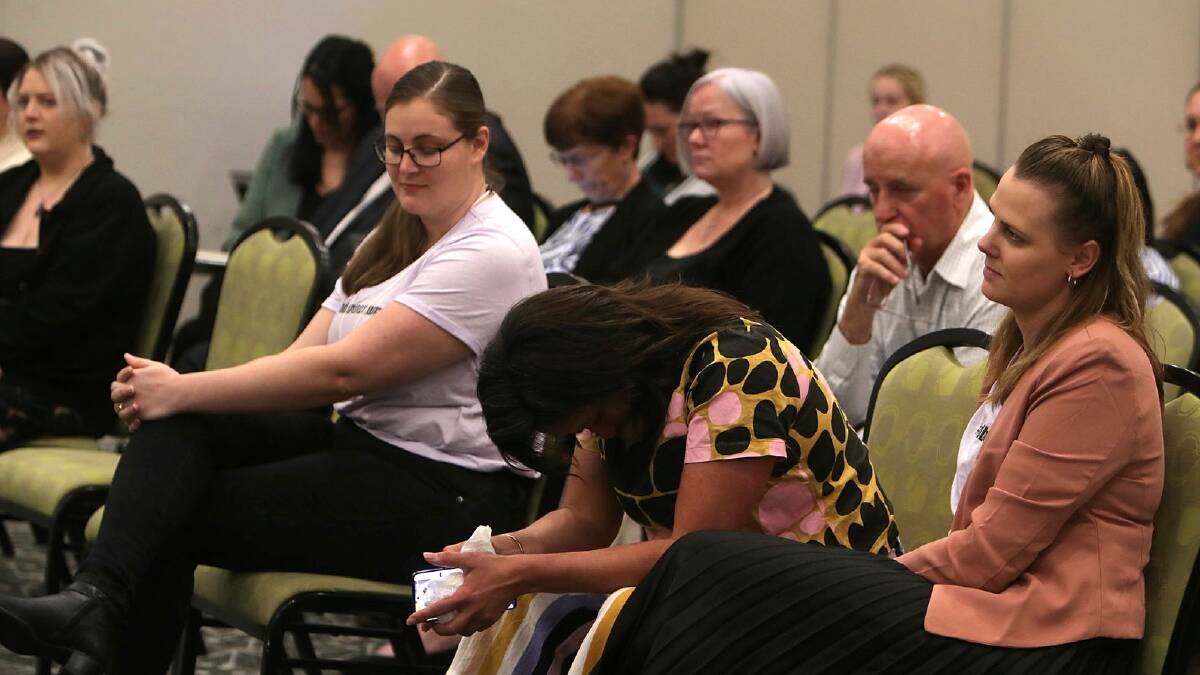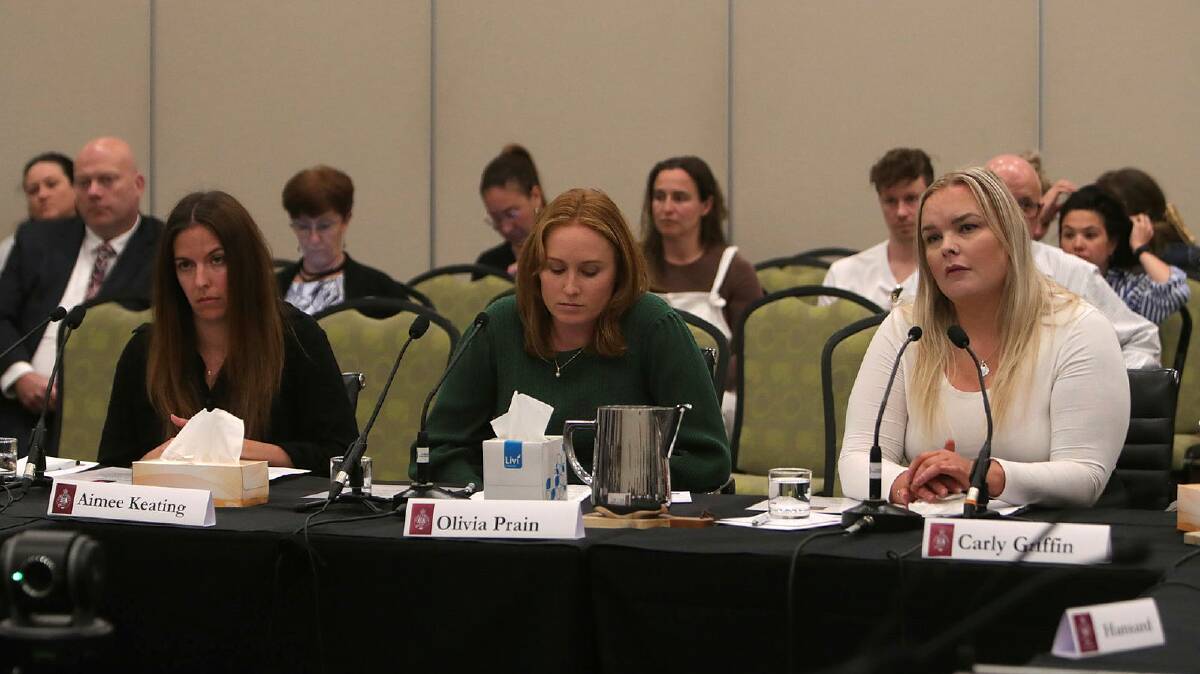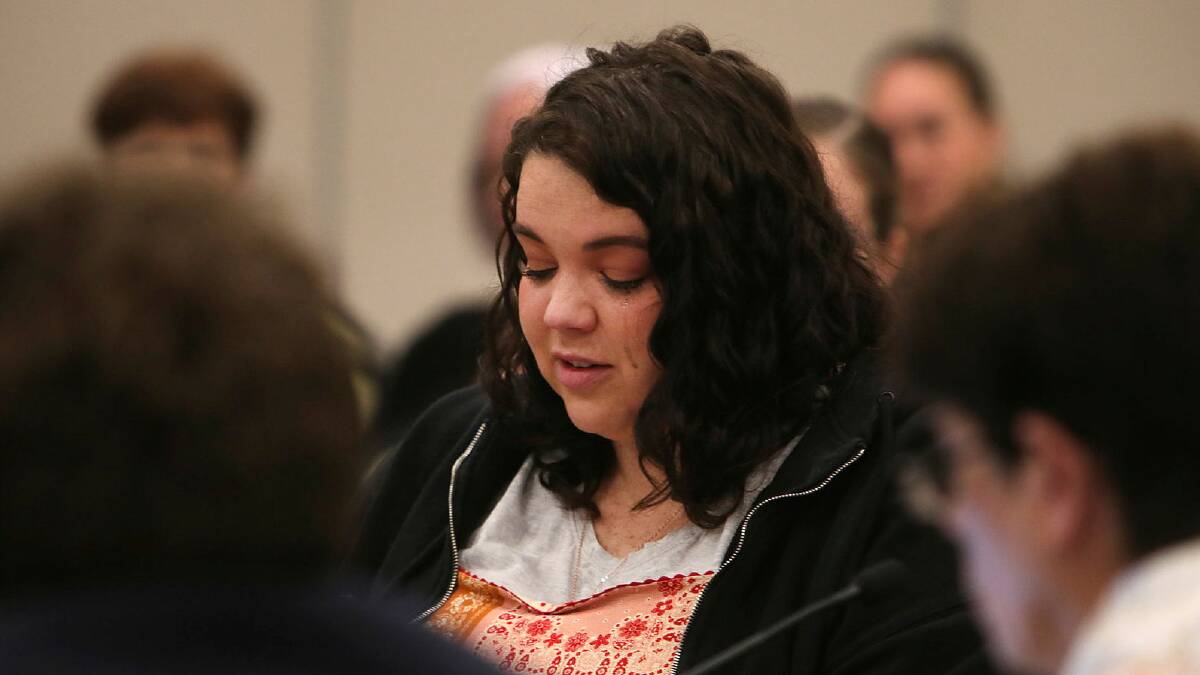
A consumer advocacy group which has been asking for change for seven years has told a NSW inquiry that it is "inconceivable management didn't know there was this much trauma" among women who gave birth at Wollongong Hospital.
Subscribe now for unlimited access.
$0/
(min cost $0)
or signup to continue reading
Representatives of Better Births Illawarra (BBI), formed in 2016 by a group of mothers after they heard from numerous women about their issues during birth, told a public hearing in Wollongong that there had been "seven years of inaction" from the Illawarra Shoalhaven Local Health District.
"It's inconceivable to us that management didn't know that this much birth trauma was walking out of their hospital," Better Births Illawarra secretary Alyssa Booth told the panel of MPs at the Sage Hotel.
"How do you work there and not know that that is what people are saying about your birth unit?
"We need to see a big culture change, we need to see something significant particularly in the local health district."
Since it formed, BBI has been asking the health district to expand access to the Midwifery Group Practice (MGP) program, which allows women to see the same midwife throughout their pregnancy and during and after labour.
They say this model provides the best practice care for women and is shown to reduce birth trauma; continuity of care has been one of the recurring themes of the parliamentary inquiry.
BBI vice-president Sharon Settecasse told the committee her group had been meeting with the health district with little or no change for seven years, and said, "if anything things have gotten worse" when it comes to Illawarra women's access to continuity of care.
"The partnership with the local health district is pretty rocky at the moment because I think seven years is a long time for there to be no action and we want more action," she said.
"We've tried everything. We've thrown everything at this and it's disappointing."
Ms Settecasse said the group has met repeatedly with management about expanding access to the MGP program, but believed the program had been eroded since 2016.
Ms Booth and Ms Settecasse were quizzed about how women are "risked out" of the MGP and how such programs may be opened up so women deemed to have high risk pregancies can also see the same medical staff throughout their antenatal period and birth.
Ms Settecasse attributed this to the hierarchical way birthing operates in Australia, with obstetricians given this last say.
"Everywhere else in the world, [midwives and obstetricians are] in partnership and they're working together and there's no hierarchy," Ms Settecasse said.
"So we're not trusting midwives enough that they can actually support all women to have physiological positive births and I think it's quite possible for midwives to look after high risk women.
"They know their limits and they know when to refer to an obstetric team."

Mother Olivia Prain, who gave evidence during the morning, spoke of the challenges women face in finding continuity of care, especially if they are classed as high risk.
Ms Prain told the committee of her experience in trying to have a vaginal birth after caesarean (VBAC) after giving birth the first time under a private obstetrician, when she had an emergency c-section following an induction.
At first, Ms Prain said, she was accepted into the MGP, but once she was deemed high risk she was "risked out" and told she could not continue in the program.
Faced with having to see a different doctor or midwife each time she had an appointment at the hospital, Ms Prain decided to "pay thousands" to engage a private midwife, and a doula as private midwives are not allowed to be in the hospital.
She said she had a "empowering, healing, intervention free VBAC" but raised concerns that not all families are able to afford this kind of care.
"It shouldn't be this hard to have continuity of care with a midwife when the evidence tells us this is best practice," she said.

Cordeaux Heights mother Jess Holliday also highlighted issues with the way women who are deemed to be "high risk" are treated within the hospital system.
She said she was labeled high risk due to her weight and body mass index (BMI), which meant she was only able to access care through a "revolving door of obstetricians".
"It felt like my worth was reduced to a number of a scale," she said, as she faced "humiliation and shame" as well as contradictory information from the doctors.
"I was warned of a big baby due to my size and advised early to have an induction," she said.
"The birthing pool was off limits because of my BMI as it was considered a workplace health and safety issue."
Midway through her pregnancy found out about the existence of private midwives, and used her saving to switch her care to this model.
At her final hospital appointment Ms Holliday said she was warned by an obstetrician about the dangers of home birth and said she felt "coerced" by stories which were designed to scare her, but continued with her plan to give birth under the care of her midwife.
"A week later, my 3.6kg baby was born at home fulfilling my dreams for a home birth," she said.
"My journey was fraught with emotional turmoil, disappointment and frustration. It's essential we address this systemic issue in our health care system to ensure no other expectant mothers experience the same distress I did."


